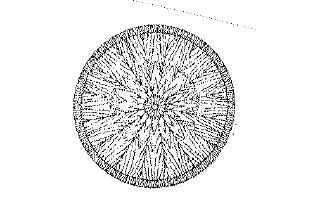- HOME
- ABOUT VENEER
- DOMESTIC
- EXOTIC
- BURL/CROTCH
- DYED VENEER
- PROJECTS
- CABINETS
- ACCESSORIES
- DOORS
- PANELS
- FIXTURES
- FURNITURE
- CUE COMPONENTS
- ON SALE
Matching of Veneer
| About Veneer | History of Veneer | Veneer Manufacturing Methods | Veneer Matching |
| There are many creative ways to match veneer leaves as they are laminated onto a substrate. | |
Book MatchAdjacent veneer leaves in a flitch are turned over, as in pages of a book. The veneer joints match in a mirror image of each other, creating a symmetrical pattern or series of pairs. This is the most common form of matching. Because tight side and loose sides face each other, they may reflect light and stains differently. This can be minimized with proper finishing techniques. |  |
Slip MatchAdjacent veneer leaves are slipped side by side, with the same sides up. The figure repeats, but the grain does not necessarily match at joints. Grain patterns that are not perfectly straight may have the appearance of running off the leaf, making a panel appear to slant. Slipmatching produces a uniform color because all the faces have similar light reflection. |  |
Random MatchLeaves are selected randomly from one or more flitches, using leaves dissimilar in color and characteristics. It simulates lumber planking with its mismatched effect. Once the veneer matching method is decided, there are various ways of arranging the leaves: |  |
|
Balanced Match Veneer Leaves are of uniform width on the panel, there can be an odd or even number of leaves. | |
|
Center Match Veneer Leavesare of uniform width on the panel, using an even number of leaves starting from the center of the panel. | |
|
Running Match Panels are arranged from as many veneer leaves as necessary, with any left over portions of the last leaf becoming the start of the next panel | |
Other Matching TechniquesArchitectural or Blue Print Panel Match – Veneered components are made in the exact sizes required, tailored to the job. Veneer is sequenced, matching grain from panel to panel as cabinets, doors, walls panels etc.are designated throughout the plan. Sunburst Match – Successive leaves of veneer are trimmed into pie shaped pieces and bookmatched with points meeting at the center. Often used with highly figured veneer such as burls and birdseye and formed into round, oval or octagon shaped panels. Diamond Match - Most effectively done with straight grained veneer, four quadrants are fitted together to form a diamond shape. Butt Match – Veneer is bookmatched at the ends of the leaf. This is used when the veneer is not long enough to cover the desired panel length. Finger Joint Match - Another method used when veneer is not long enough. The veneer is butt match and trimmed, then the two pieces joined with interlocking fingers. This reduces the appearance of a perpendicular seam line. Burls & Crotch Veneer Match – Because Burls & Crotchs are highly figured, they often require softening before matching and have a propensity to form hairline cracks. The handling of them requires extra care and cost, but finished results can be extraordinary. |  |